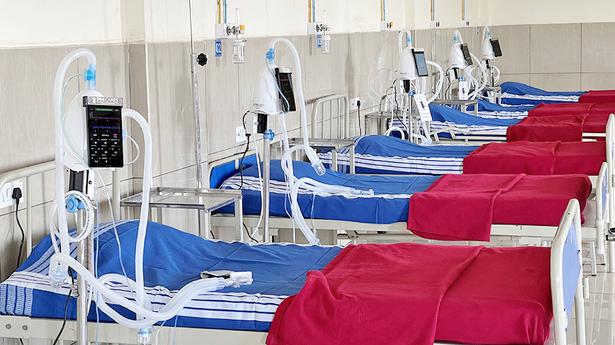
With more oxygen plants commissioned, State-run hospitals in Karnataka now have surplus
The Hindu
Although the third wave has not seen any rise in demand for oxygen, Karnataka is continuing its efforts to augment its oxygen generation infrastructure under CSR funds from the private sector
Although the third wave has not seen any rise in demand for oxygen, the State is continuing its efforts to augment its oxygen generation infrastructure under CSR funds from the private sector.
On Tuesday, Health and Medical Education Minister K. Sudhakar inaugurated a pressure swing adsorption (PSA) oxygen generation plant with a capacity of 960 tonnes in K.C General Hospital.
Prompted by an acute shortage during the second wave, the State Government had got 243 oxygen plants allocated under various initiatives and CSR funds. As of Tuesday, 237 of the 243 plants have been commissioned.
With oxygen consumption in the State remaining stable all through the third wave, experts said the State may now have this medical resource in surplus. “CSR funds should now be used for reinforcement of ICU care and strengthening of manpower in state-run hospitals in the rural areas. Besides, maintenance and monitoring of the existing facilities also requires attention,” an expert who is part of the State’s Clinical Expert Committee said.
The new oxygen plant at K.C. General Hospital is the fourth such facility there. The hospital already has three oxygen generation plants (two with a capacity of 600 tonnes each and another with 390 tonnes capacity).
Hospital Medical Superintendent B.R. Venkateshaiah said as of now the total consumption of liquid medical oxygen (LMO) in the hospital is not exceeding 1.5 kilo litres a day in their 100-bed ICU which now has 27 patients. “We have a storage capacity of eight kl of LMO in the 553-bed hospital. During the pandemic, we required refilling twice a day. However, now we are refilling once every five-six days. While LMO is used for ICU patients as it has a purity of 99%, oxygen generated through the plants is used for patients in high dependency units and general wards,” he said.
Admitting that the hospital will now have a surplus of oxygen, he said: “With the new addition, we can maintain around 250 more beds requiring oxygen. The plant has been set up through CSR funds from HDFC bank after the oxygen crisis in the second wave”.

 Run 3 Space | Play Space Running Game
Run 3 Space | Play Space Running Game
 Traffic Jam 3D | Online Racing Game
Traffic Jam 3D | Online Racing Game
 Duck Hunt | Play Old Classic Game
Duck Hunt | Play Old Classic Game

















